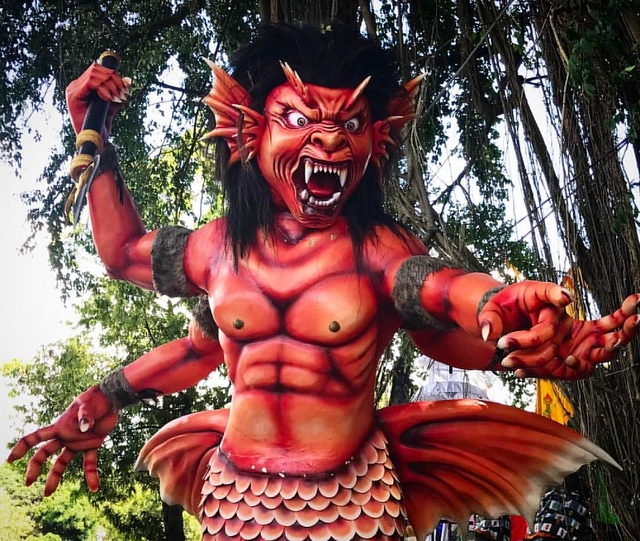
Not all Balinese offerings look elegant and refined like the Channang Sari, which combines four types of flowers, intertwined coconut leaves, and a handful of rice.
In Balinese religion, one must accept both the good and the bad. Not only the gods deserve attention for their beautiful and kind deeds, but also the demons, if only for their power.
Balinese people try to appease demons with delicious offerings. And since the demons Bhuta and Kala are not only fierce but also have a special appetite, offerings for them are made in a specific way.
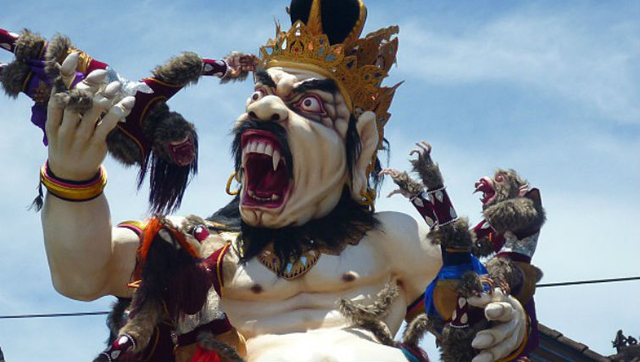
Since demons are not particularly selective, truly, from the Balinese perspective, they can satisfy their hunger with the fresh blood of a slaughtered animal. And if they are fed properly, they will not only refrain from bothering people but also assist them.
"Charu" (caru) is the general term for a class of offerings made to demons or, philosophically speaking, to the negative aspects of the universe.
Charu offerings range from the smallest ones, requiring the sacrifice of a single chicken, to larger ones where a multitude of animals are offered.
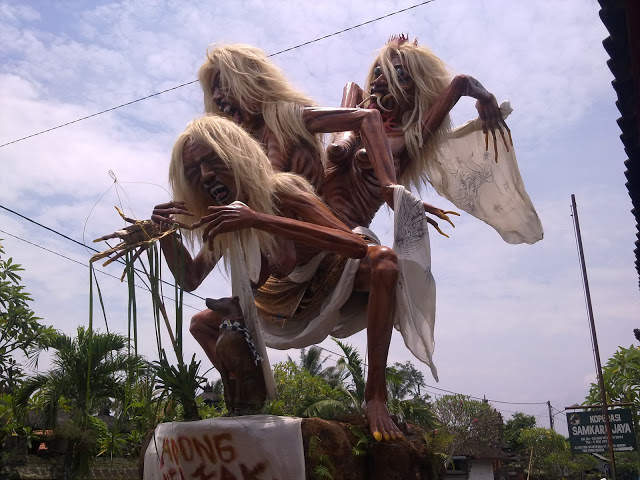
Who are these demons, Bhuta and Kala? From the perspective of Balinese culture, they are malevolent spirits that bring both minor and major troubles. They are powerful, but they can be controlled through special rituals.
The appearance of these spirits can be seen on the walls of temples, where monsters with long fangs, bulging eyes, and a malicious grin are depicted. Or in the figures that Balinese people create for the Ngrupuk demon parade before the Nyepi holiday.
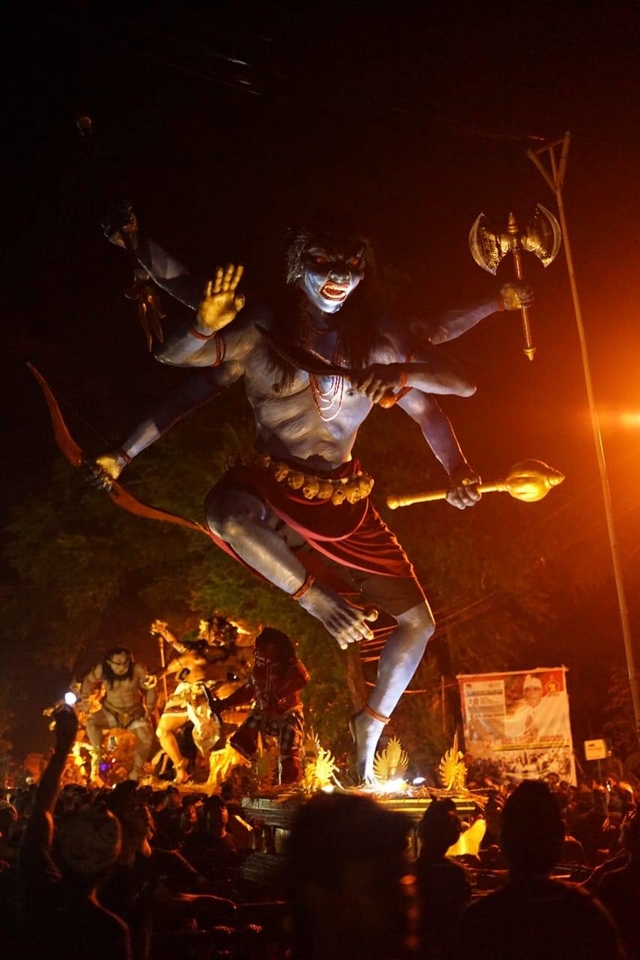
The words Bhuta and Kala come from Sanskrit. Bhuta means "impure element that constitutes the body" or "supernatural being." Kala means "time," "fate," or "god of death."
Although Bhuta and Kala are demons, they also represent, in a broader sense, the dark, animalistic side of humans and the Hindu universe. In the world, they symbolize all that is physical, grotesque, and temporary. In humans, they embody greed, passions, and hunger.
For Balinese people, Bhuta and Kala can manifest as tangible monsters. They are encountered at crossroads, in places where ceremonies of offerings to them are held.
Balinese believe that demons have difficulty turning and cornering. This is why an "aling-aling" wall is installed at the entrance of a Balinese compound. It is believed to act as an obstacle in the path of demons.
Priests tend to attribute a more philosophical meaning to the existence of Bhuta and Kala. For them, Bhuta and Kala represent manifestations of competing mystical forces. Thus, Bhuta is not just a monster, but rather a center of destructive forces, imbalance, and obstruction that must be smoothed out and nullified through offerings.
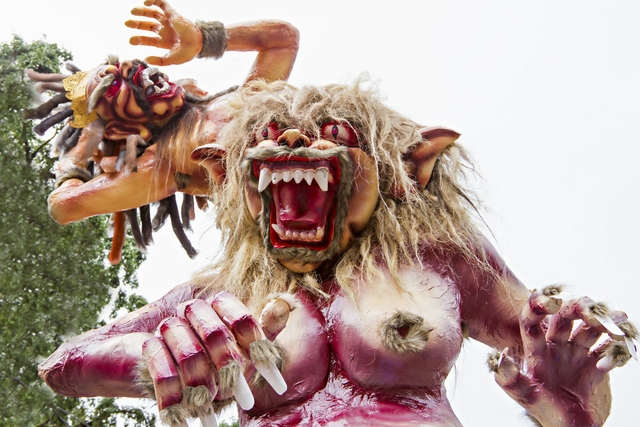
It is believed that humans, as a microcosm of the universe, also contain negative forces within themselves. Within a person, Bhuta can be represented as illness or a bad character.
Balinese people do not believe that negative forces can be defeated once and for all or banished entirely. In Hinduism, there exists a concept of the coexistence of good and evil, which Balinese refer to as "rwa bhineda."
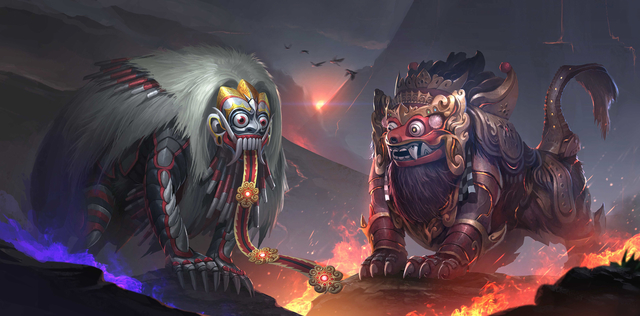
Thus, in Balinese understanding, evil spirits are not destroyed or eradicated. They are subdued and appeased.
Offerings for demons in Bali are placed on the ground. However, this does not mean that evil spirits reside low to the ground or within it. It simply signifies the differentiation between offerings for demons and those for benevolent spirits and gods.
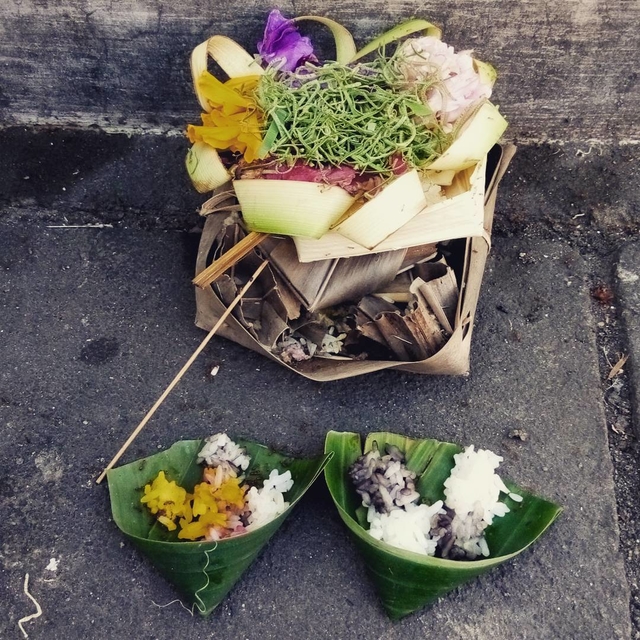
With one small exception, all "charu" offerings are connected with the killing of animals. And in this case, such killing is not considered cruelty.
When an animal is killed for a sacrificial offering, Balinese people believe that the karma of that animal is improved, and in future reincarnations, it may become a being of higher order. Moreover, from the perspective of Hinduism, the body holds little significance. It is merely a temporary vessel.
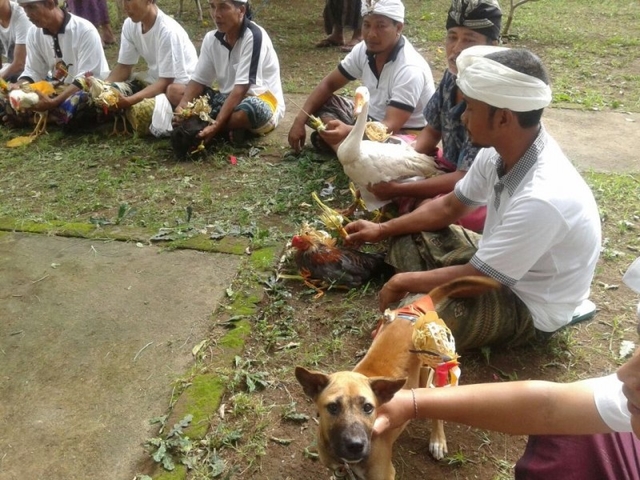
When an animal is killed for a sacrificial offering, it is believed that this action must be carried out with great reverence. Offerings are made to it, and prayers are recited, requesting the gods to reincarnate it in the next life in a higher status.
The smallest "charu" offering is called "segihan." This is precisely an offering for which no one is killed to create it.
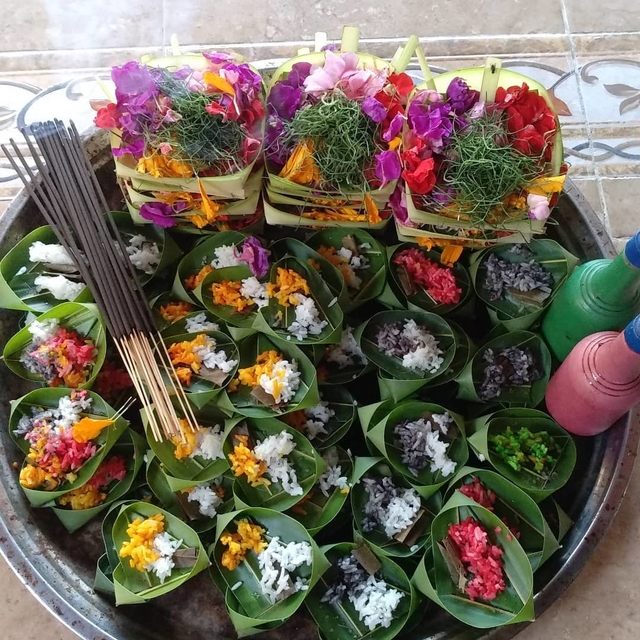
There are several varieties of "segihan," but the most popular one is "ituk-ituk." It consists of a triangular cup made from coconut leaves. The offering contains shallots and ginger. Shallots are considered cold, while ginger is hot. Thus, these opposites remind Bhuta and Kala of the need to maintain balance in the universe.
The simplest "segihan" contains two small portions of cooked rice. Usually, such offerings are placed at the entrance of a house to deter Bhuta and Kala from taking an interest in entering. Sometimes, "segihan" is accompanied by the offering of "canang sari" (a type of offering). Typically, the person making such an offering does a hand gesture, dispersing the aroma and essence of the offering, and sprinkles it with three drops of rice wine.
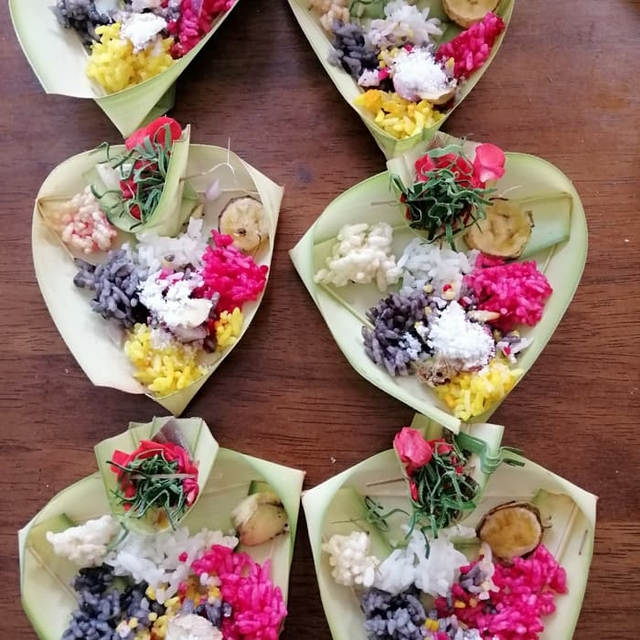
In some households, "segihan" offerings are made daily. In others, they are made less frequently, but they should be offered no less often than every Kajeng Kliwon holiday, which occurs every 15 days, as on this day, according to Balinese belief, the spirits are most active.
Larger offerings are often made by priests since they involve many intricacies regarding the correct way to prepare them.
Color symbolism plays a significant role in the "charu" ceremony. For Balinese people, the entire universe is oriented not only by directions but also by colors.
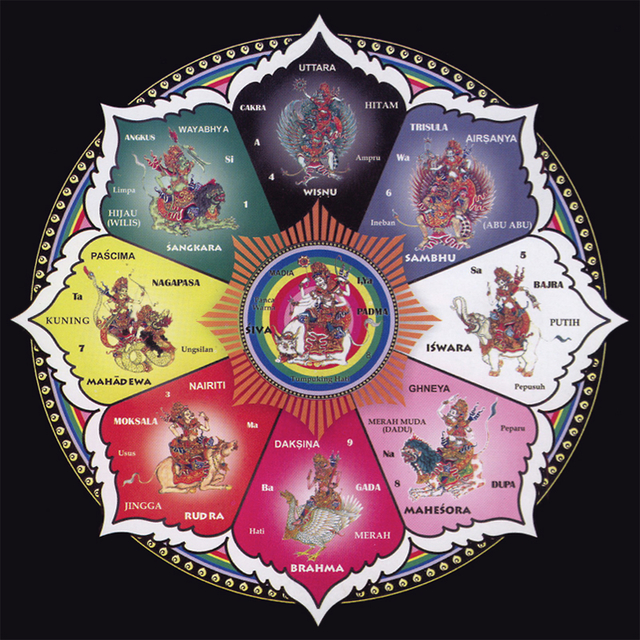
In the center is Shiva, who is usually symbolized by white, but in this case, he can encompass all colors. The colors and positions of other deities are as follows:
- North: Vishnu, black color
- Northeast: Sambu, blue
- East: Isvara, white
- Southeast: Mahesora, pink
- South: Brahma, red
- Southwest: Rudra, orange
- West: Mahadeva, yellow
- Northwest: Sangkara, green
For the offerings, rice of corresponding colors is used. White, red, and black rice grow in Bali. To obtain yellow rice, turmeric is used. Other colors are usually achieved using store-bought food coloring. For larger offerings, piles of rice of different colors are distributed to the cardinal directions, and a mixture of different colors is placed in the center. Such a mixture is called "brunbun."
Unlike offerings made to benevolent spirits and gods, the components of offerings to demons are not consumed. Usually, a pit is dug for the remnants of the offerings, where they are discarded, or they are thrown into a river.
Most "charu" ceremonies are conducted using temporary shrines. It is called "sanggah cucuk," woven from split bamboo, and is made either in the form of a triangle or a small arch. Similar shrines are created at the base of "penjor" decorations, which can be seen along the roadsides during major festivals.

Balinese people believe that the size of the "charu" offering is proportional to the duration for which it will be effective. A simple "segihan" lasts for a day, a small "charu" offering remains effective for 6 months. Some offerings may have an effect for several days. The largest offerings, conducted during the Eka Dasa Rudra ritual, work for 100 years.
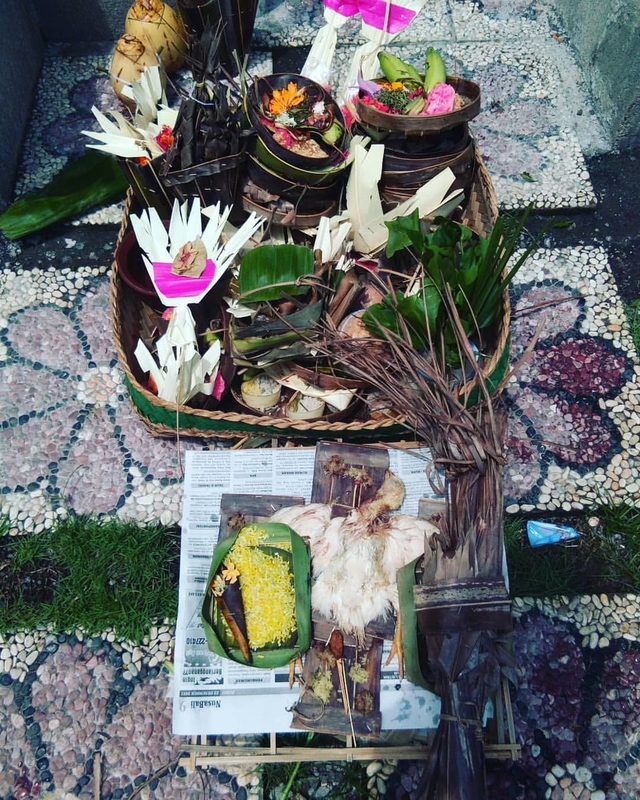
The next ceremony after "segihan" in terms of complexity is called "Eka Sata." It is conducted during the purification ritual for a new house, known as "melaspas," or a day before tooth filing. For this ceremony, one colorful chicken is required.
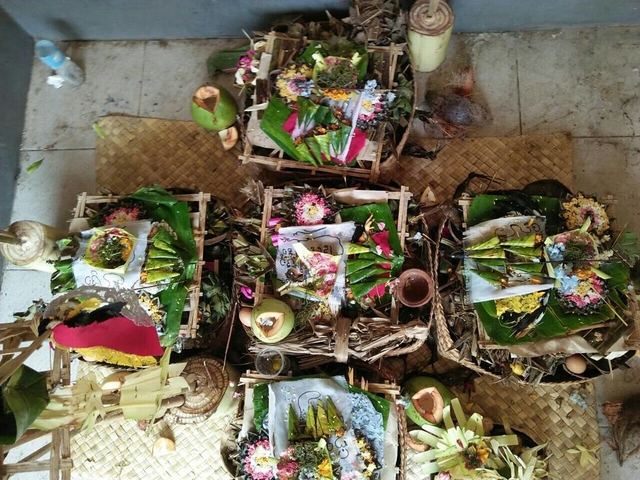
The next level is "Panca Sata." For this ceremony, five chickens of different colors are required, representing various cardinal directions. A white, red, yellow, black, and multicolored chicken are placed in the center. This ceremony is typically conducted once a year before the Nyepi holiday at road intersections. Temple festivals in some villages also occasionally require "panca sata."
The next level in terms of complexity is "Panca Kalaud." During this ceremony, five chickens of different colors are offered as sacrifices, along with a dog of a specific color pattern known as "bangbungkem" (blang bungkem) in Bali. These dogs have a black muzzle and red or brown fur. Balinese people consider this symbolic of Rudra, one of the aspects of the god Shiva. Such a ceremony may be conducted during temple reconstruction.

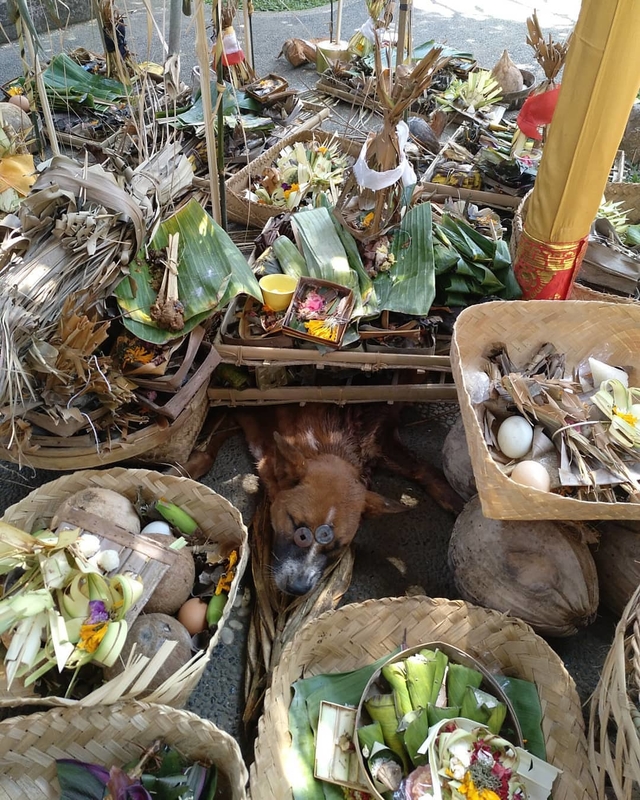
Another level of the ceremony is "Rsi Gana." In this one, the same animals as in the previous levels are required, along with an additional white duck.
At the next level, in the list of ritual offerings for "Warespati Kalpa," one goose is added.
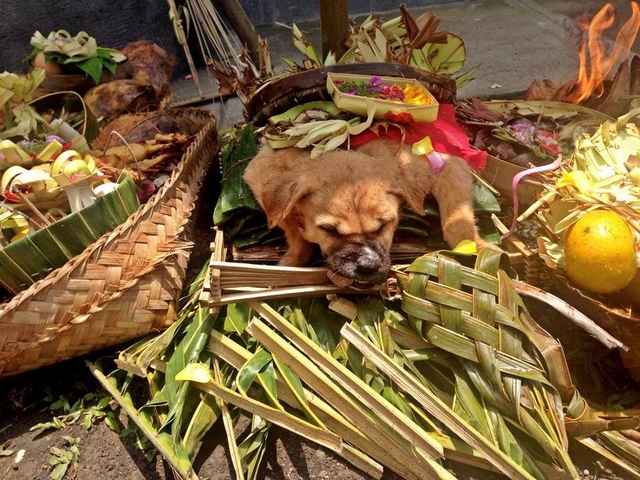
The highest form of the "charu" ceremony is "Taur" or "Tawur." Literally translated, it means "payment." Such a ceremony, specifically "Tawur Kesangga," is held annually at the Pura Besakih temple before Nyepi. In addition to the animals listed below, it includes one water buffalo, a goat, a cow, a black pig, and a black-and-white goose.
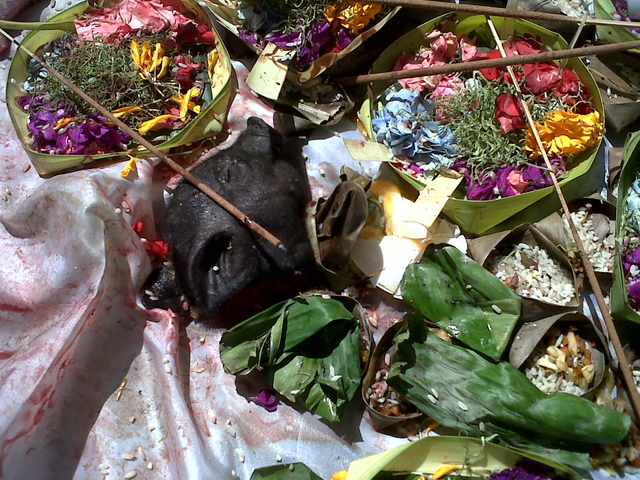
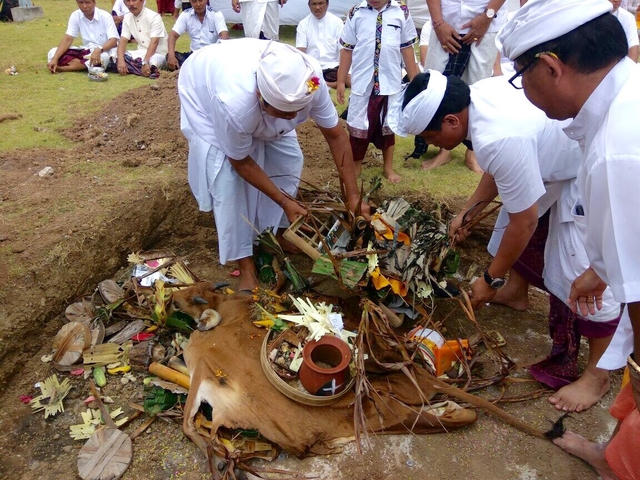
In a way, cockfights in Bali are also part of a ritual aimed at appeasing demons through the shedding of blood.
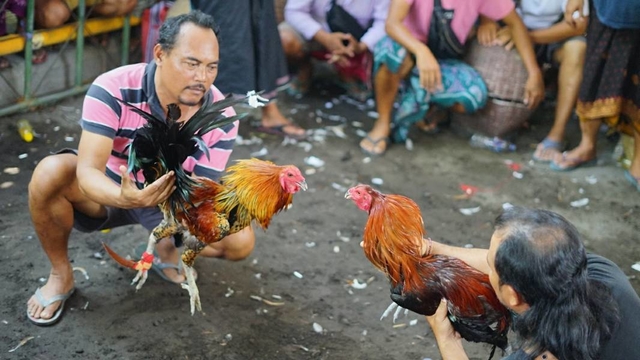
On one hand, rooster fights can be seen as gambling games, which are generally prohibited in Indonesia. But on the other hand, this is a very ancient form of pastime, a part of the island's traditions, and if you search thoroughly, you can almost always find where they are held in Bali.
It is completely legal to conduct rooster fights in Bali as part of a religious ceremony. During such a ceremony, a unique offering of spilled blood takes place - known as 'tabuh rah' (Tabun Rah)."
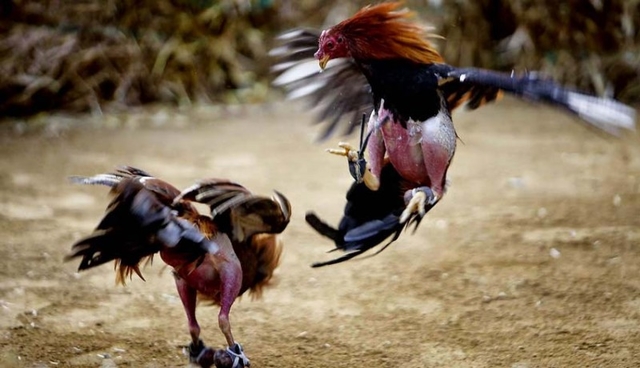
The person conducting the ritual holds a container of fresh spilled blood in their left hand, which is intended for the gods. With the brush of their right hand, they disperse its scent and essence, directing it towards the desired direction. Often, a flower is also held in this hand between the thumb and index finger. Then, the container is taken in the right hand and its contents are spilled onto the ground.
If any rooster is injured in the fights, the container is not needed. They simply allow it to spill its blood on the ground."
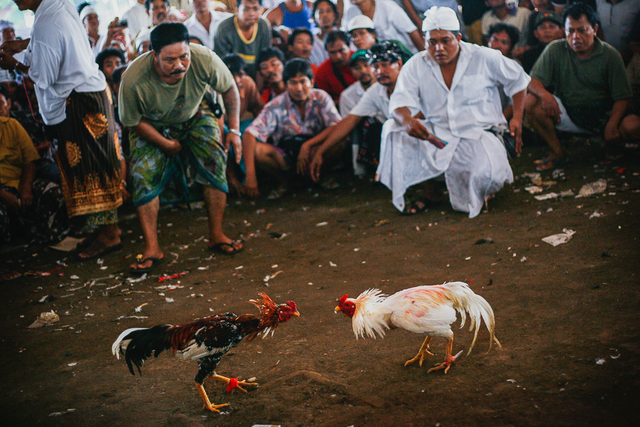
In complex temple ceremonies, during the ritual of 'matabuh' (matabuh), which involves the pouring of liquids, Balinese people use five types of beverages corresponding to the five symbolic colors of the gods.
Tuak, palm wine - white
Palm brandy - yellow
Brem, rice wine - black
Pure water - transparent
Blood - red
These five liquids are linked to the five fluids in the human body - lymph, digestive juice, bile, serum, and blood. Their use in the 'tabuh' ceremony holds the hope that the five bodily fluids will be balanced in harmony with the macrocosm.
You can add one right now!